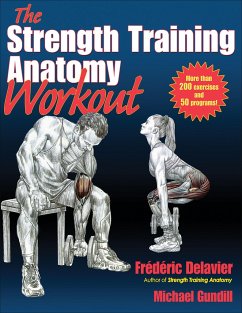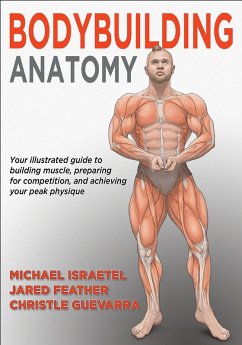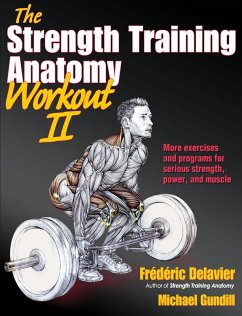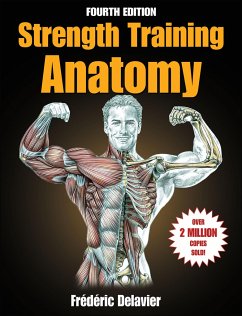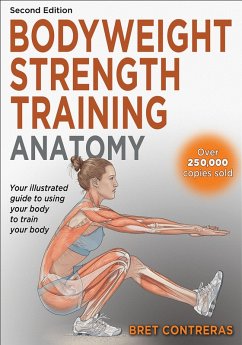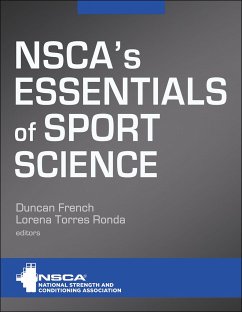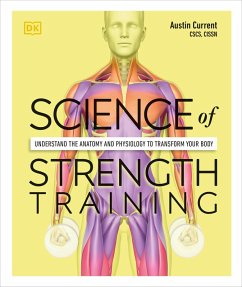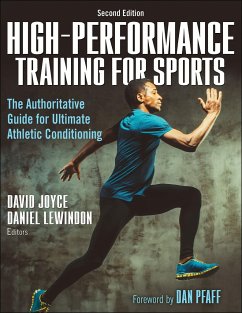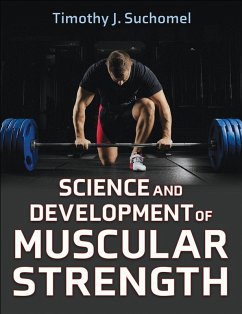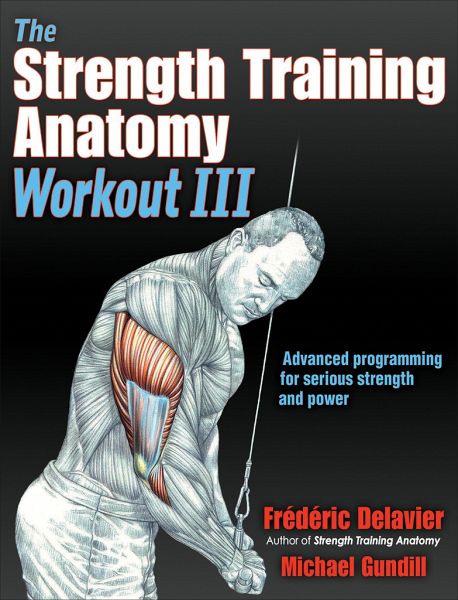
The Strength Training Anatomy Workout 03
Maximizing Results with Advanced Training Techniques
Versandkostenfrei!
Versandfertig in 2-4 Wochen

PAYBACK Punkte
17 °P sammeln!




Books by best-selling author Fr d ric Delavier have sold more than two million copies. His latest, The Strength Training Anatomy Workout III, is an advanced guide to the secrets of training. It will help you cross the plateau to achieve greater muscle development and gains.
Dieser Artikel kann nur an eine deutsche Lieferadresse ausgeliefert werden.
FrÉdÉric Delavier is a gifted artist with an exceptional knowledge of human anatomy. He studied morphology and anatomy for five years at the prestigious École des Beaux-Arts in Paris and studied dissection for three years at the Paris FacultÉ de MÉdecine. The former editor in chief of the French magazine PowerMag, Delavier wrote for several fitness publications, including the French magazine Le Monde du Muscle, Men's Health Germany, and Ironman. He is the author of the best-selling Strength Training Anatomy, Women’s Strength Training Anatomy, The Strength Training Anatomy Workout, The Strength Training Anatomy Workout II, Delavier's Core Training Anatomy, Delavier's Stretching Anatomy , and Delavier’s Women’s Strength Training Anatomy Workouts. Delavier won the French powerlifting title in 1988 and gives worldwide presentations on the sport applications of biomechanics. His teaching efforts have earned him the Prix de Techniques et de PÉdagogie Sportive. Delavier lives in Paris, France. Michael Gundill has written 16 books on strength training, sport nutrition, and health, including coauthoring The Strength Training Anatomy Workout, The Strength Training Anatomy Workout II, and Delavier’s Women’s Strength Training Anatomy Workout. His books have been translated into multiple languages, and he has written over 500 articles for bodybuilding and fitness magazines worldwide, including Iron Man and Dirty Dieting. In 1998 he won the Article of the Year Award at the Fourth Academy of Bodybuilding Fitness & Sports Awards in California. Gundill started weightlifting in 1983 in order to improve his rowing performance. Most of his training years were spent completing specific lifting programs in his home. As he gained muscle and refined his program, he began to learn more about physiology, anatomy, and biomechanics and started studying those subjects in medical journals. Since 1995 he has been writing about his discoveries in various bodybuilding and fitness magazines worldwide.
Produktdetails
- Anatomy
- Verlag: Human Kinetics Publishers
- First Edition
- Seitenzahl: 256
- Erscheinungstermin: 17. Mai 2019
- Englisch
- Abmessung: 254mm x 195mm x 20mm
- Gewicht: 770g
- ISBN-13: 9781492588511
- ISBN-10: 1492588512
- Artikelnr.: 54469779
Herstellerkennzeichnung
Libri GmbH
Europaallee 1
36244 Bad Hersfeld
gpsr@libri.de
Für dieses Produkt wurde noch keine Bewertung abgegeben. Wir würden uns sehr freuen, wenn du die erste Bewertung schreibst!
Eine Bewertung schreiben
Eine Bewertung schreiben
Andere Kunden interessierten sich für


